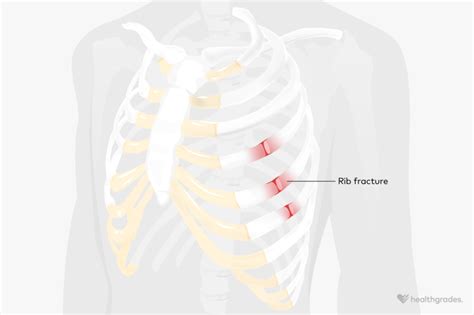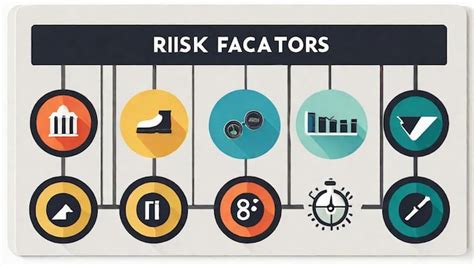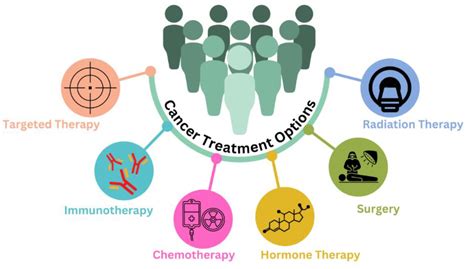Intro
Identify broken rib fracture symptoms, including chest pain, bruising, and breathing difficulties. Learn about types of rib fractures, treatment options, and recovery processes to manage rib injury and related complications like pneumothorax.
The pain and discomfort associated with a broken rib fracture can be debilitating, affecting every aspect of daily life. From simple tasks like breathing and moving to more complex activities like exercising or even sleeping, a broken rib can make life extremely challenging. Understanding the symptoms of a broken rib fracture is crucial for seeking timely medical attention and ensuring proper treatment. The symptoms can vary in severity and may resemble those of other conditions, making diagnosis sometimes tricky.
A broken rib, medically known as a rib fracture, occurs when one of the bones in the rib cage breaks or cracks. This can happen due to various reasons such as severe coughing, falls, car accidents, or sports injuries. The symptoms that follow can be quite distressing and may include severe chest pain that worsens with breathing, coughing, or movement. The pain can be sharp and stabbing or a dull ache, depending on the severity of the fracture. In some cases, the pain might radiate to the back or abdomen.
Recognizing the symptoms early on is vital for managing the condition effectively. Apart from pain, other symptoms might include difficulty breathing, tenderness or swelling in the chest area, bruising, or deformity if the break is severe enough to cause the rib to protrude. In severe cases, a broken rib can lead to more serious complications like a punctured lung, which requires immediate medical attention. The variety of symptoms and potential complications underscore the importance of prompt medical evaluation if a rib fracture is suspected.
Understanding Broken Rib Fracture Symptoms

Understanding the symptoms of a broken rib fracture involves recognizing both the immediate signs of injury and the potential complications that can arise. Immediate symptoms often include sharp pains in the chest that are exacerbated by deep breathing, coughing, or sneezing. The pain can also worsen with movement or pressure on the chest. In addition to pain, individuals might experience difficulty breathing or shortness of breath due to the pain associated with expanding the lungs.
Common Symptoms of Broken Rib Fractures
Some common symptoms include: - Severe chest pain that worsens with movement or deep breathing - Tenderness or swelling at the site of the injury - Bruising or discoloration of the skin - Difficulty breathing or feeling short of breath - Coughing or sneezing that aggravates the pain - Feeling fatigued due to disrupted sleep patterns from painCauses and Risk Factors of Broken Rib Fractures

The causes of broken rib fractures can be diverse, ranging from direct blows to the chest, such as those sustained in car accidents or falls, to indirect forces like the severe contraction of muscles during coughing fits. Risk factors that increase the likelihood of suffering a rib fracture include older age, due to the decrease in bone density, participation in contact sports, and pre-existing conditions like osteoporosis that weaken bones.
Diagnosing Broken Rib Fractures
Diagnosis typically involves a combination of physical examination, patient history, and imaging tests. A healthcare provider will look for signs of injury, such as bruising or swelling, and assess breathing and movement to gauge the severity of the fracture. Imaging tests like X-rays or CT scans are crucial for confirming the diagnosis and ruling out other potential causes of symptoms.Treatment Options for Broken Rib Fractures

Treatment for broken rib fractures is primarily focused on managing pain, supporting the healing process, and preventing complications. This can include over-the-counter pain medications, applying ice to reduce swelling, and getting plenty of rest. In severe cases, hospitalization may be necessary to monitor for complications and provide oxygen if breathing is compromised.
Recovery and Rehabilitation
Recovery from a broken rib fracture can take several weeks to a few months, depending on the severity of the injury. It's essential to follow the treatment plan carefully and make lifestyle adjustments to avoid exacerbating the injury. This might include taking regular breaks to rest, avoiding heavy lifting or bending, and practicing deep breathing exercises to maintain lung function.Complications of Broken Rib Fractures

While many broken rib fractures heal without major issues, there are potential complications to be aware of. One of the most serious complications is a punctured lung (pneumothorax), where air leaks into the space between the lung and chest wall, causing the lung to collapse partially or completely. Other complications can include internal bleeding, infection, and in rare cases, damage to surrounding organs like the spleen or liver.
Preventing Broken Rib Fractures
Prevention involves reducing the risk of injury through safety measures such as wearing appropriate protective gear during sports, using seatbelts while driving, and taking steps to prevent falls, especially in older adults. Maintaining strong bones through a balanced diet and regular exercise can also help reduce the risk of fractures.Living with a Broken Rib Fracture

Living with a broken rib fracture requires patience, as the healing process can be lengthy and uncomfortable. It's crucial to prioritize rest, manage pain effectively, and follow the healthcare provider's guidance to ensure proper healing and minimize the risk of complications. Support from family and friends can also play a significant role in recovery, helping with daily tasks and providing emotional support during a challenging time.
Coping Mechanisms
Coping with the discomfort and limitations of a broken rib fracture involves finding ways to manage pain, stay positive, and maintain as much independence as possible. This can include using pain management techniques like meditation or deep breathing, staying connected with loved ones, and setting realistic goals for recovery to stay motivated.Conclusion and Future Outlook

In conclusion, understanding the symptoms, causes, and treatment options for broken rib fractures is essential for individuals to seek appropriate medical care and support their recovery. With advancements in medical technology and a better understanding of bone health, the future outlook for managing and preventing broken rib fractures continues to improve. By prioritizing bone health, taking preventive measures against injury, and seeking medical attention when symptoms arise, individuals can reduce their risk of experiencing a broken rib fracture and ensure a smoother recovery if such an injury occurs.
Final Thoughts
Final thoughts on broken rib fractures emphasize the importance of a proactive approach to health, including preventive measures and prompt medical intervention when needed. By being informed and taking care of one's health, individuals can navigate the challenges of a broken rib fracture with greater ease and look forward to a full recovery.What are the most common symptoms of a broken rib fracture?
+The most common symptoms include severe chest pain that worsens with movement or deep breathing, tenderness or swelling at the site of the injury, bruising, and difficulty breathing.
How long does it take to recover from a broken rib fracture?
+Recovery time can vary depending on the severity of the fracture but generally takes several weeks to a few months.
Can broken rib fractures be prevented?
+While not all broken rib fractures can be prevented, measures such as wearing protective gear during sports, using seatbelts, and preventing falls can reduce the risk.
We invite you to share your experiences or ask questions about broken rib fractures in the comments section below. Your input can help others understand this condition better and navigate their recovery journey. If you found this article informative, please consider sharing it with others who might benefit from this information. Together, we can support each other in maintaining good health and overcoming challenges like broken rib fractures.
